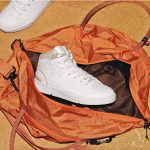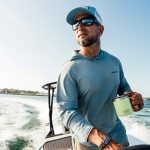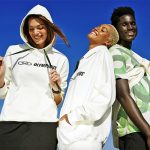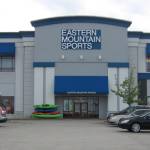Speaking at Oppenheimer’s 24th Annual Consumer Growth and E-Commerce Conference, Steve Lawrence, CEO of Academy Sports, elaborated on the chain’s efforts to improve access to better products from its footwear vendor partners and to secure new brands, including Hoka and On.
“They’re two of the hottest brands out there,” said Lawrence when asked about Academy’s chances of gaining access to Hoka and On. “One of the eye-opening things is when you look at just those two brands within the running sector, they’ve tripled their market share over the last two years. So, they’re clearly growing and taking share.” However, Lawrence noted that at this stage in their growth trajectory, both Hoka and On don’t have the capacity to expand beyond their current channels.
“We’re having dialog with them, candidly,” said Lawrence, “Right now, however, they’re both so hot that I think they’re having a hard time filling their existing distribution channels. So, they’re not necessarily looking to expand, but they’re giving us an indication that when they get to the place where they can satisfy their existing demand and look to expand, we would be someone they would consider doing that with. So, we’re going to keep having those dialogues.”
The question came as Academy reported first-quarter results on Tuesday that saw same-store sales fall 5.7 percent, slightly below Academy’s target, and earnings per share missed Wall Street’s consensus estimates. Academy officials indicated that inflation, high credit debt and other factors are weighing on consumer spending; however, the retailer continues to maintain its revenue guidance for the year, forecasting improving top-line trends over the remaining quarters.
The footwear category showed negative same-store growth for the fifth straight period but marked strong improvement sequentially. Footwear sales were down 1.0 percent following declines in 2023 of 8.8 percent in the fourth quarter, 8.2 percent in the third quarter, 4.5 percent in the second quarter, and 2 percent in the first quarter.
Footwear’s sequential improvement in the first quarter was led by athletic footwear, which had the strongest performance, driven by performance running brands, including Nike, Brooks, and New Balance. Casual footwear was the second-best-performing category, with strong sales in Birkenstock, Crocs and Skechers.
Lawrence said during the conference that the athletic footwear category has received help with improved product access and is talking with its partners, particularly in the premium run space, citing Nike, Adidas, Brooks, and New Balance, for better access “to higher-end, more-innovative product” and has found some success.
Lawrence noted, for example, that Academy has slowly secured better access to the Nike Air Max 270, a strong seller in recent years for the brand. “If you go back 18 months ago, we didn’t have that in our store. Last year, we had it in about 75 stores. This year, it’ll be in 150 stores going into back-to-school, and we’ll sell it online where we have more colors,” he noted.
Academy will also have access to Nike’s P-6000 footwear model for the upcoming holiday season.
Lawrence also called Brooks a “great, great partner.” He added, “Our Brooks business has been on fire. We get access to virtually everything there, and it’s been one of our main growth drivers.” He said the push for higher-end footwear products is part of a broader emphasis on adding newness across the retailer’s offerings. Lawrence noted that today’s strained consumer seeks value but is willing to pay more for innovation.
“I would say that Hoka and On fall into that newness and innovation [area] where it’s almost agnostic to price,” said Lawrence. “If it’s the hot shoe that the kid wants, that’s what they want.”
According to Lawrence, one of the reasons Academy has secured better access to footwear product and other categories is the work the company has done in recent years building up its “better” and “best” assortments.
Lawrence said Academy has historically been “really good at the good'” tier of the assortment range. “Academy is the place in our marketplace where the kid comes in one day and says, ‘I want to play t-ball,” and he gets the bat, the ball, the glove, and cleats all under $100. That was who we were. And then, of course, the next month, when he decided he didn’t want to play baseball and put that stuff in the closet, he’d come in and buy the soccer ball and shin guards or whatever the next sport was,” said Lawrence.
Academy recognized it had missed opportunities because it wasn’t supporting the better and best products the athlete needs as he aspires to join the recreation league, travel team or the next step to a higher level.
“We didn’t have the gear or the product to stay with them on that journey through sport,” said Lawrence. “So, layering on that better, best to the assortment, whether it’s footwear in running, whether it’s in sporting goods, whether it’s in outdoor—that’s helped us keep that customer stay with us on that journey through sport.”
In footwear, Lawrence said Academy’s focus on building out “better, best” assortments across categories is helping the chain sell higher-priced shoes. He noted that five years ago, Academy didn’t sell footwear over $100 and still doesn’t sell much footwear above the $190 to $200 range. He added, “But we sell a lot of footwear, particularly from brands like Brooks and Nike, north of $100 in the $130 to $150 range that we didn’t sell five years ago. So, our customers have given us permission for that. In a lot of cases, it’s maybe us reaching a customer we weren’t servicing before. They were leaving our store to go to another store to find that product.”
Lawrence said securing the “better, best” product also helps drive traffic but stressed that Academy is “still maintaining our good assortment” to support its strong value positioning while the additional better and best offerings support “incremental volume.”
Beyond athletic footwear, Academy does a “meaningful” work footwear business that can also serve as a footwear driver for Academy, said Lawrence. “We can lean into that as a category and expand our assortment and go after hotter brands there like Ariat,” he said.
In footwear, Academy also has a “big casual business” with HeyDude and Skechers, led by its Slip-Ins range, both doing “very, very well for us.”
Among its casual offerings, sandals and flip-flops are major sellers, with Oofos and Birkenstock representing two newer brands supporting the category. Academy started selling the Birkenstock brand in 100 stores last year and will reach 200 this year. Lawrence also highlighted Reef and Olukai as two strong sellers in the sandals/flip-flops category.
Carl Ford, Academy’s EVP and CFO, also noted at the Oppenheimer conference that another reason Academy has gained better access to products across categories is because vendors want to capitalize on Academy’s growth in the years ahead. Academy plans to open 15 to 17 stores this year and, earlier this year, set a goal of opening 160 to 180 new stores over the next five years.
Ford noted that with Academy ending the first quarter with 284 stores in only 18 states, the chain could reach 800 stores nationwide. “There’s a ton of growth opportunity in the geographic and the channel space, and why wouldn’t you want to get in on the ground floor of that as a vendor,” said Ford.
Image courtesy Oppenheimer















